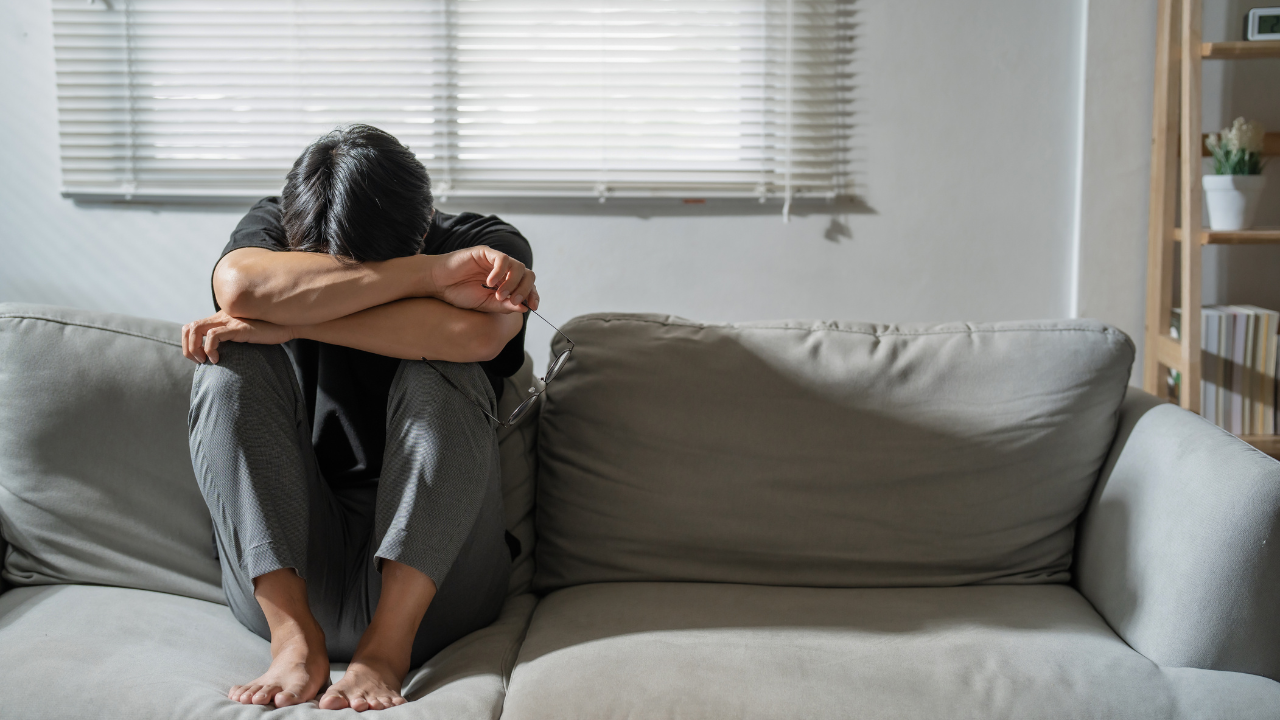Anxiety is a natural mental issue that is characterized as a response to stress, often manifesting when we encounter situations that are unfamiliar or perceived as threatening. However, when anxiety becomes persistent, overwhelming, or irrational, it can develop into an anxiety disorder, a serious mental health condition.
This article explores the causes, symptoms, and treatment options for anxiety disorders, providing a comprehensive understanding of this complex condition.

What Are Anxiety Disorders?
Anxiety disorders refer to a group of mental health conditions characterized by excessive worry, fear, or nervousness. While it’s normal to feel anxious occasionally—such as before a job interview or a major event—anxiety disorders involve intense, prolonged anxiety that interferes with daily life. Individuals with anxiety disorders may find it difficult to control their worries and may avoid situations that trigger their anxiety, leading to significant impairment in their personal, professional, and social lives.
The most common types of anxiety disorders, include:
- Generalized Anxiety Disorder (GAD): Characterized by persistent and excessive worry about various aspects of daily life, such as health, work, and relationships, often without a specific cause.
- Panic Disorder: Involves sudden and recurrent panic attacks, which are intense episodes of fear accompanied by physical symptoms like a racing heart, shortness of breath, and dizziness.
- Social Anxiety Disorder: A fear of being judged or embarrassed in social situations, leading to avoidance of public gatherings or interactions.
- Specific Phobias: An intense fear of specific objects or situations, such as heights, animals, or flying.
- Obsessive-Compulsive Disorder (OCD): Characterized by intrusive thoughts (obsessions) and repetitive behaviors (compulsions) performed to alleviate anxiety.
- Post-Traumatic Stress Disorder (PTSD): Develops after experiencing or witnessing a traumatic event, causing flashbacks, nightmares, and severe anxiety.
Causes of Anxiety Disorders
The exact cause of anxiety disorders is not fully understood, but they are believed to result from a combination of genetic, environmental, and psychological factors. Below are some of the key factors that contribute to the development of anxiety disorders:
1. Brain Chemistry
Imbalances in neurotransmitters—chemicals in the brain that regulate mood—such as serotonin, dopamine, and norepinephrine, are thought to play a role in anxiety disorders. These imbalances can affect how the brain processes anxiety and stress.
2. Environmental Stressors
Traumatic or stressful life events, such as the death of a loved one, divorce, or a major financial crisis, can trigger anxiety disorders. Long-term exposure to stress, whether it’s related to work, relationships, or other areas, can also lead to the development of chronic anxiety.
3. Personality Traits
Certain personality traits, such as perfectionism or a tendency to worry, can increase the likelihood of developing a major mental issue in the form of anxiety. People who are more sensitive to stress or have low self-esteem may also be more prone to anxiety.
4. Medical Conditions
Chronic health conditions like heart disease, diabetes, and respiratory disorders can give rise to the mental issue. In some cases, the anxiety may be directly related to the physical illness or to the stress of managing the condition.
5. Substance Abuse
Alcohol, drugs, and caffeine can exacerbate or even trigger anxiety symptoms. For some, substance abuse can lead to the development of an anxiety disorder, while others may turn to these substances as a way to cope with their anxiety, creating a harmful cycle.
Symptoms of Anxiety Disorders
Anxiety disorders manifest differently in different people, but there are common emotional and physical symptoms that may indicate a problem. These symptoms can range from mild to severe, depending on the individual and the type of anxiety disorder they are experiencing.
Emotional Symptoms
- Feelings of restlessness or being on edge
- Irritability or mood swings
- Difficulty concentrating or focusing
- A sense of impending doom or danger
Physical Symptoms
- Rapid heart rate or palpitations
- Sweating, trembling, or shaking
- Shortness of breath or feelings of suffocation
- Dizziness or lightheadedness
- Nausea or stomach discomfort
- Muscle tension or headaches
- Fatigue or insomnia
Panic attacks, which are a hallmark of panic disorder, can be particularly distressing, involving sudden, intense fear with physical symptoms that often mimic a heart attack. These episodes typically last for a few minutes but can leave a lasting impact on the individual’s mental and emotional state.
Treatment Options for Anxiety Disorders
Fortunately, anxiety disorders are treatable, and many people with these conditions go on to live full, productive lives with proper treatment. The most effective treatment plans typically involve a combination of therapy, medication, and lifestyle changes. Here are the main approaches to treating anxiety disorders:
1. Psychotherapy
It is one of the most effective treatments for anxiety disorders. Cognitive Behavioral Therapy (CBT) is particularly useful for treating anxiety. It helps individuals identify and change negative thought patterns and behaviors that contribute to their anxiety. Exposure therapy, a subset of CBT, is often used to help individuals confront and reduce fear in a controlled environment, especially in cases of phobias or PTSD.
2. Medication
Medications can help alleviate the symptoms of anxiety disorders, particularly when used in conjunction with therapy. Common medications prescribed for anxiety include:
- Antidepressants: Such as selective serotonin reuptake inhibitors (SSRIs) like fluoxetine or sertraline, which help regulate neurotransmitters.
- Benzodiazepines: Short-term medications like alprazolam or lorazepam that provide quick relief from acute anxiety symptoms.
- Anti-anxiety medications: Such as buspirone, which is often used for generalized anxiety disorder.
It’s important to note that medications are typically not a cure but can be an essential part of managing symptoms.
3. Lifestyle Changes
Simple lifestyle adjustments can have a significant impact on reducing anxiety:
- Exercise: Regular physical activity helps lower stress and anxiety levels by releasing endorphins.
- Healthy Diet: Eating a balanced diet and avoiding caffeine and alcohol can help manage anxiety symptoms.
- Sleep Hygiene: Adequate sleep is crucial for maintaining mental health.
- Mindfulness and Relaxation Techniques: Practices like meditation, deep breathing exercises, and yoga can reduce stress and promote relaxation.
4. Support Groups
Joining a support group can provide a sense of community and shared experience. Talking with others who understand what you’re going through can be incredibly helpful in reducing the feeling of isolation that often accompanies anxiety.
Conclusion
Anxiety disorder is a complex mental issue that can significantly impact an individual’s life. While the causes are multifaceted and the symptoms vary from person to person, treatment options like therapy, medication, and lifestyle changes can offer effective relief. If you or someone you know is struggling with anxiety, seeking professional help is the first step toward recovery. With the right support, individuals with anxiety disorders can regain control of their lives and experience improved well-being.

